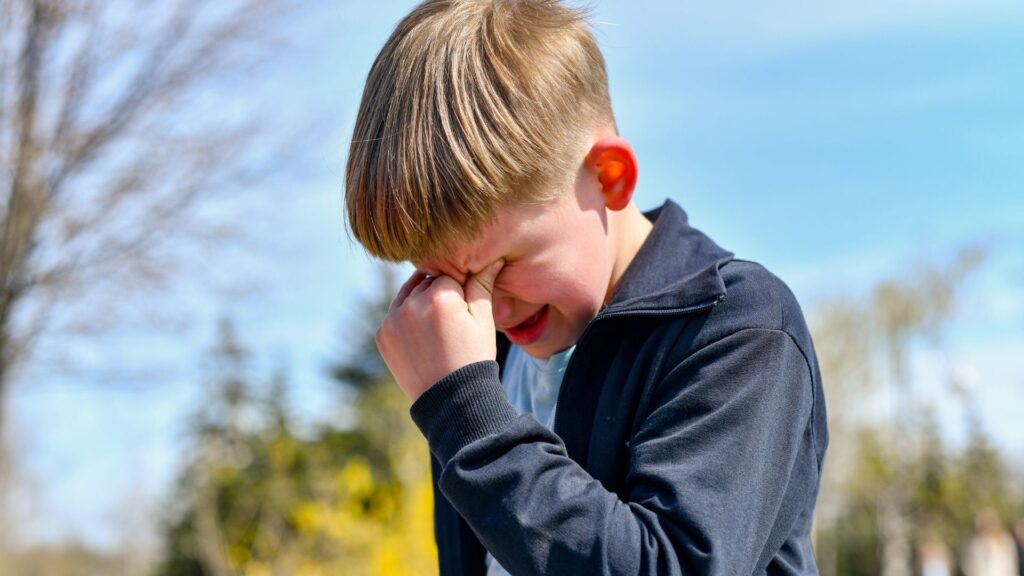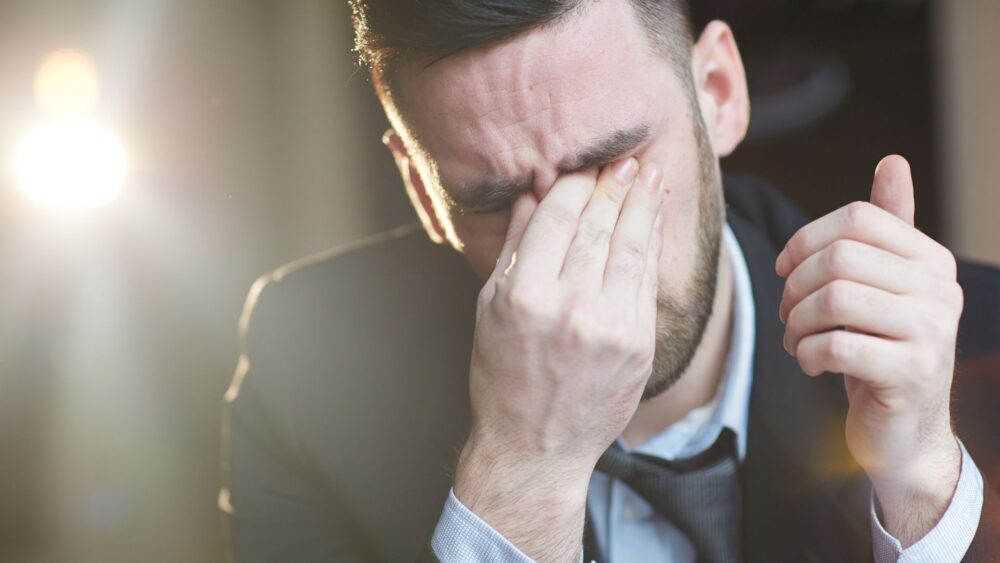Crying humanizes male celebrities and challenges the “men don’t cry” stigma.
My thinking is always informed by positive psychology. In contrast to the Dale Carnegie positive thinking stereotype, positive psychology is an empirically based study of the things that make life worth living. The focus is to understand what contributes to well-being and how people and institutions can increase the factors that support human flourishing. Psychology has long embraced the medical model—identifying pathology. This is important, but once you’ve identified what is wrong, the obvious next question is how do we move beyond fixing what’s wrong to one that includes making more of what’s right?
Crying is a form of emotional release, an important biological function. Yet throughout human history, cultures have assigned meaning to behaviors such as crying, often in direct conflict with what supports optimal physical and mental health. The societal pressure on men to suppress emotions is one of those things that needs fixing.
Key Ideas
- The tears of male celebrities challenge outdated gender norms.
- Crying releases dopamine and oxytocin, aiding in emotional healing.
- Suppressing emotions can lead to mental and physical health issues.
- Norms have evolved, yet stigmas over “acceptable” sources of grief persist.
Describing the loss of his dog brought Jon Stewart to tears. Google “Jimmy Kimmel, emotions,” and you’ll see several videos of Kimmel crying when discussing events on his show, from mass shootings to remembering lost colleagues. Justin Bieber was captured crying over Butterbeer at Harry Potter World. We all cry, of course, but many still believe that men should be stoic and strong and that showing emotions is a sign of weakness. Especially in public. Research on 2,000 middle-aged men found that they reported crying in front of others an average of 14 times as adults. That seemed pretty infrequent to me until I read that it dropped to 5 for the generation above them. Women tend to cry more, but there is no physiological reason why this should be true.
The belief that men need to control their emotions starts young. “Boys don’t cry” is pervasive from the playground to the boardroom and is entirely a social construction. Not crying may seem good for street cred, but it deprives non-criers of an important aspect of self-soothing. Crying releases dopamine and oxytocin, which can lessen emotional distress. On the other hand, emotional suppression, the conscious denial of what you are experiencing emotionally and physically, can undermine mental and physical health. Boys taught to suppress their emotions often find it difficult to form deep, meaningful relationships as adults.
Awareness of societal norms can help, but that doesn’t solve the professional and social pressures on men to conform to traditional masculine norms which can negatively impact mental health and emotional well-being (Wong et al., 2017). So, thank you to Stewart and Kimmel for being willing to show that emotional vulnerability doesn’t tank men’s chances of professional or personal success.

Crying Has Gone In and Out of Social Acceptability
Crying has gone in and out of being an accepted norm throughout history depending on the prevailing social philosophy and gender role beliefs. There was lots of crying in the Bible. Not as much in the Renaissance once Stoicism got some serious traction. While public crying picked up again with the religious fervor of the Puritans and Methodists, crying was definitely back out again with the emotional repression of the Victorians.
There are cultural differences in the acceptability of crying for men. Japan emphasizes more restraint, while Latin America allows more emotionality. However, the within-culture male-female gender differences remain (Sharman et al., 2019).
In the U.S., the acceptability of men crying in public has evolved. But even though we know it’s “OK for boys to cry,” the cultural expectations for men to adhere to traditional gender norms that emphasize emotional stoicism and toughness remain. It’s one thing for Jon Stewart to miss his dog (a man’s best friend). But it’s quite another when Justin Bieber succumbs to feelings of emptiness and sadness despite his meteoric successes. If the Internet is any barometer of public sentiment, dogs are OK, but feeling sad and empty isn’t.
There’s No Crying in War
History suggests that in crying acceptance as in other social policies, we’re in for some unfortunate regression. Wars and periods of conflict have historically been associated with heightened emotional repression in men. The combination of political peer pressure, political and economic conflict, COVID-19 residue, and general anxiety over what will surely be an ugly election season threaten to reinforce tribalism and othering, which does not bode well for the stigma around men letting tears flow for any reason, but certainly for mental distress. When people are scared, it puts pressure on men to demonstrate strength, courage, and resilience in the face of adversity. Not only do they have to suppress vulnerable emotions such as sadness or fear, but in another manifestation of gender roles, they have to bear the responsibility of making things better. This was the dominant cultural narrative around World War II, but as Gregory Peck showed in Twelve O’Clock High, people are not made to withstand that level of stress. Ironically, this is when someone needs a good cry the most.
Attitudes have gradually shifted, and while it has become more acceptable for men to express their emotions openly, the double standards remain. We are more tolerant towards men crying when the situations are socially acceptable or understandable. It’s OK for men to cry during moments of extreme joy, grief, or empathy, such as the birth of a child, the death of a loved one, or the loss of your dog. Perceptions of authenticity and sincerity can influence people’s response to men’s tears, as genuine expressions of emotion are more acceptable than those interpreted as insincere or “unearned.” But the stigma doubles down when it comes to mental illness. Bieber may have been sincere, but his level of success makes his existential crises of purpose seem somehow ungrateful because he has what so many people want. That’s when he’s supposed to have that stiff upper lip or pull up his bootstraps.
Emotional Regulation is Healthy, Emotional Suppression is Not
There’s a difference between emotion regulation, which is our ability to manage our emotions to cope and navigate daily life, and emotional suppression. Suppression of emotions is a conscious process. When we do it, we are aware that we are avoiding, ignoring, or generally keeping our emotional experience under wraps. However, our emotions share biochemical links with our nervous, endocrine, immune, and digestive systems, so there are no effective means of eliminating the effects no matter how calloused you think you’ve become. Suppressing emotions raises cortisol levels and chronic activation of the stress hormones can have detrimental physical and psychological effects.
In The Body Bears the Burden, Scaer (2001) provides compelling evidence as to how suppressed emotions and trauma stay in the body. His work contributed to a shift toward the integration of body-oriented and holistic therapies to understand and treat trauma and stress and the physiological impact of suppressed emotions. Unresolved stress remains encoded in the body, leading to dysregulation of the autonomic nervous system and chronic stress response activation. The longer-term effects of suppressed emotions include anxiety, depression, and stress-related illnesses, and can lead to alcohol and substance abuse. The continued effort to maintain emotional suppression increases sympathetic nervous system activity with immediate and delayed consequences for stress-induced cardiovascular reactivity. Behaviorally, research also shows suppressing emotions can make people more aggressive and interfere with interpersonal relationships and intimacy.
Men Can Cry When They Lose Their Dog
Kimmel and Stewart have the advantage of being well-known as successful and powerful public figures. They can cry on TV without facing negative fan reactions because they are well-liked, authentic in their emotional vulnerability, foster empathy by sharing personal stories that connect emotionally with their audience, and their tears tend to align with acceptable reasons for men to cry. Heartfelt topics, such as those told in the context of personal experience, are seen as genuine expressions of compassion rather than weakness. That doesn’t make Bieber’s mental distress and sadness any less worthy of empathy, but it shows the limits of our collective understanding and acceptance.
Celebrity gives them all more latitude in challenging traditional gender stereotypes because their tears demonstrate that men can be strong, successful, and emotionally expressive. The double standard between the tears over the loss of a dog and tears from depression, however, underscores the importance of continually challenging these social norms and beliefs. “It’s OK for men to cry sometimes” is better than never, but as long as we still have value attributions to which kinds of tears are publicly acceptable, there is still work to be done.
References
Scaer, R. C. (2001). The body bears the burden: Trauma, dissociation, and disease. Haworth Press.
Sharman, L. S., Dingle, G. A., Baker, M., Fischer, A., Gračanin, A., Kardum, I., Manley, H., Manokara, K., Pattara-Angkoon, S., Vingerhoets, A., & Vanman, E. J. (2019). The relationship of gender roles and beliefs to crying in an international sample. Front Psychol, 10, 2288. https://doi.org/10.3389/fpsyg.2019.02288
Wong, Y. J., Ho, M. H.-R., Wang, S.-Y., & Miller, I. S. K. (2017). Meta-analyses of the relationship between conformity to masculine norms and mental health-related outcomes. Journal of Counseling Psychology, 64(1), 80-93. https://doi.org/10.1037/cou0000176

 Dr. Pamela Rutledge is available to reporters for comments on the psychological and social impact of media and technology on individuals, society, organizations and brands.
Dr. Pamela Rutledge is available to reporters for comments on the psychological and social impact of media and technology on individuals, society, organizations and brands.